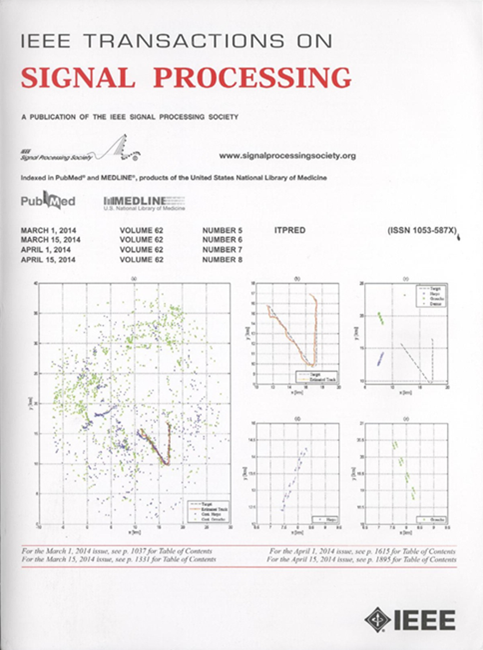大规模MIMO系统的联合用户选择和混合预编码器设计
IF 4.6
2区 工程技术
Q1 ENGINEERING, ELECTRICAL & ELECTRONIC
引用次数: 0
摘要
大规模多输入多输出(MIMO)系统是现代无线通信的基石,能够显著提高容量和可靠性。然而,由于空间相关性、噪声信道信息和问题的非凸性带来的复杂性,用户选择和混合预编码器/解码器设计的联合优化仍然具有挑战性。本文通过考虑多用户大规模MIMO系统的下行链路来解决这些问题。假设发射机处有噪声版本的信道信息,且天线间存在空间相关性,并提出了联合用户选择和模数混合预编码器设计的优化问题。网络的总和率被认为是导致非凸和NP-hard混合整数优化的设计指标。为了解决非凸性问题,提出了一种迭代方法,该方法对模拟预编码器/解码器、数字解码器和用户选择产生多个更简单的边界和松弛凸子问题,并具有封闭形式的解。此外,该算法还利用完美或不完美的信道状态信息(CSI)来优化所选用户的数量。本文还推导了在完美和不完美CSI下具有多天线用户的大规模MIMO系统的广义用户选择度量,并进一步分析了具体场景,如ZF、MRT、块对角化预编码器和大规模MIMO设置。最后,将该方法推广到有限分辨率移相器,并对瑞利衰落信道进行了评估。仿真结果表明,与目前其他联合用户选择和预编码器设计相比,该方法具有较好的性能。本文章由计算机程序翻译,如有差异,请以英文原文为准。
Joint User Selection and Hybrid Precoder Design for Massive MIMO Systems
Massive multiple-input multiple-output (MIMO) systems are a cornerstone of modern wireless communication, enabling significant improvements in capacity and reliability. However, the joint optimization of user selection and hybrid precoder/decoder design remains challenging due to the complexity introduced by spatial correlation, noisy channel information, and the non-convex nature of the problem. This paper addresses these challenges by considering the downlink of multi-user massive MIMO systems. A noisy version of channel information with spatial correlation between antennas is assumed to be available at the transmitter, and an optimization problem is formulated for joint user selection and hybrid analog/digital precoder design. The total sum rate of the network is considered as a design metric that leads to non-convex and NP-hard mixed-integer optimization. To address the non-convexity, an iterative method is proposed which results in multiple simpler bounding and relaxed convex sub-problems with closed-form solutions for analog precoders/decoders, digital decoders, and user selection. As a by-product, the proposed algorithm also optimizes the number of selected users with perfect or imperfect channel state information (CSI). A generalized user selection metric is also derived for massive MIMO systems with multiple-antenna users under both perfect and imperfect CSI, and is further analyzed for specific scenarios such as ZF, MRT, block diagonalized precoders, and large-scale MIMO settings. Finally, the method is extended to finite-resolution phase shifters and assessed for Rayleigh fading channels. The simulation results show that the proposed method performs favorably compared to other recent joint user selection and precoder designs.
求助全文
通过发布文献求助,成功后即可免费获取论文全文。
去求助
来源期刊

IEEE Transactions on Signal Processing
工程技术-工程:电子与电气
CiteScore
11.20
自引率
9.30%
发文量
310
审稿时长
3.0 months
期刊介绍:
The IEEE Transactions on Signal Processing covers novel theory, algorithms, performance analyses and applications of techniques for the processing, understanding, learning, retrieval, mining, and extraction of information from signals. The term “signal” includes, among others, audio, video, speech, image, communication, geophysical, sonar, radar, medical and musical signals. Examples of topics of interest include, but are not limited to, information processing and the theory and application of filtering, coding, transmitting, estimating, detecting, analyzing, recognizing, synthesizing, recording, and reproducing signals.
 求助内容:
求助内容: 应助结果提醒方式:
应助结果提醒方式:


